Table of contents
As mental health issues are starting to be discussed more openly, it can be challenging to find good care that you believe in and that works for you. I personally found the book, “Feeling Good: A new mood therapy” by David Burns1, expounding the principles of Cognitive Behavioural Therapy (CBT) to be the most compelling.
Feelings aren’t facts
The main concept behind Cognitive Behavioural Therapy is that “Feelings aren’t facts”
The world is just a system that generates a series of positive, negative and neutral events randomly. It is a neurological fact that we (our brains) first process these events, i.e. interpret, understand and perceive, before anything else 2-7. Our interpretations lead to (1) thoughts and (2) physical responses which we then feel and which leads to our moods and emotions. Our moods and emotions (and behaviours) are just reactions to our thoughts and physical sensations (Fig 1) that then regulate our behaviour.
If our understanding of what is happening is accurate, our generated emotions will be normal. But if our perception is twisted or distorted in some way, then our emotional response will be abnormal.
Being an electrical engineer, I love this analogy: think of the world as a radio station that’s broadcasting music. You are the radio and want to produce good sound, not static. Sometimes, the signal from the station may be distorted because of bad weather. But more often than not, the static is just a result of improper tuning. And once you tune the radio, almost miraculously the harsh and grating sound turns into a beautiful melody.
Our minds are also like the radio. Some rigorous mental tuning can make our depression better and we can feel good 1. This mental tuning involves breaking the vicious cycle of thoughts & sensations generating moods & feelings which in turn reinforce the thoughts & sensations causing spiraling emotions.
Meditation 8 (not discussed here) aims to break this loop by teaching you to observe the physical sensations associated with each of your emotions. When you can recognize those sensations in your body through practice, you train yourself not to react to them and succumb to the associated emotion, but instead remain equanimous. Cognitive Behavioural Therapy (CBT) 1,5, on the other hand, focuses on cutting the chain by learning to identify the thoughts that generate the bad feelings. By identifying the distorted, causal thoughts and converting them to reality, we can regulate our unhealthy beahviour.
Common Cognitive Distortions
Below is a list of common cognitive distortions that we unknowingly submit ourselves to everyday. The first step in CBT is to be aware of them and identify them in practice.
Note: You can click on each image to go to the full sized image.
 Figure 5: Disqualifying the positive
Figure 5: Disqualifying the positive
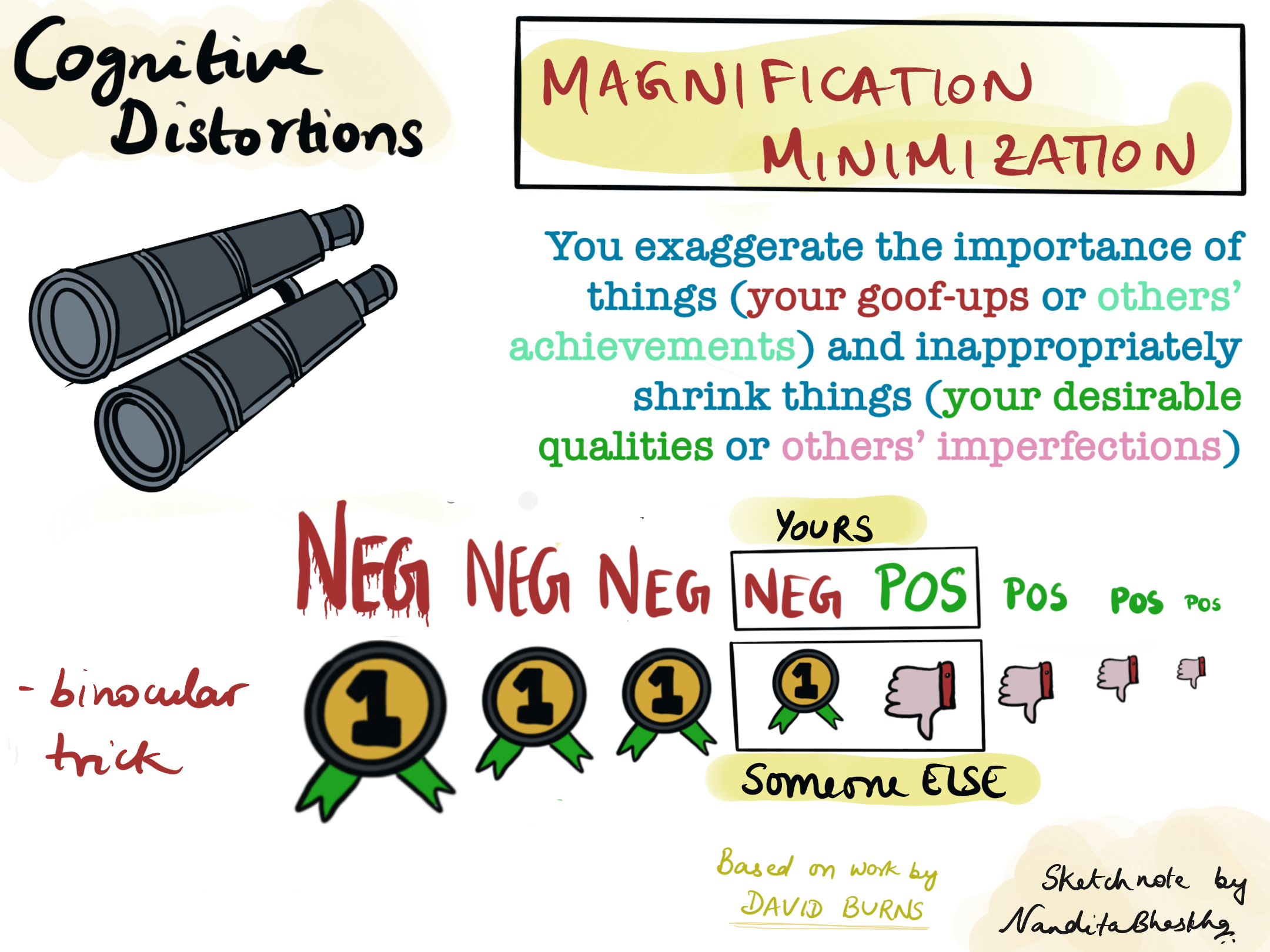 Figure 6: Magnification Minimization
Figure 6: Magnification Minimization
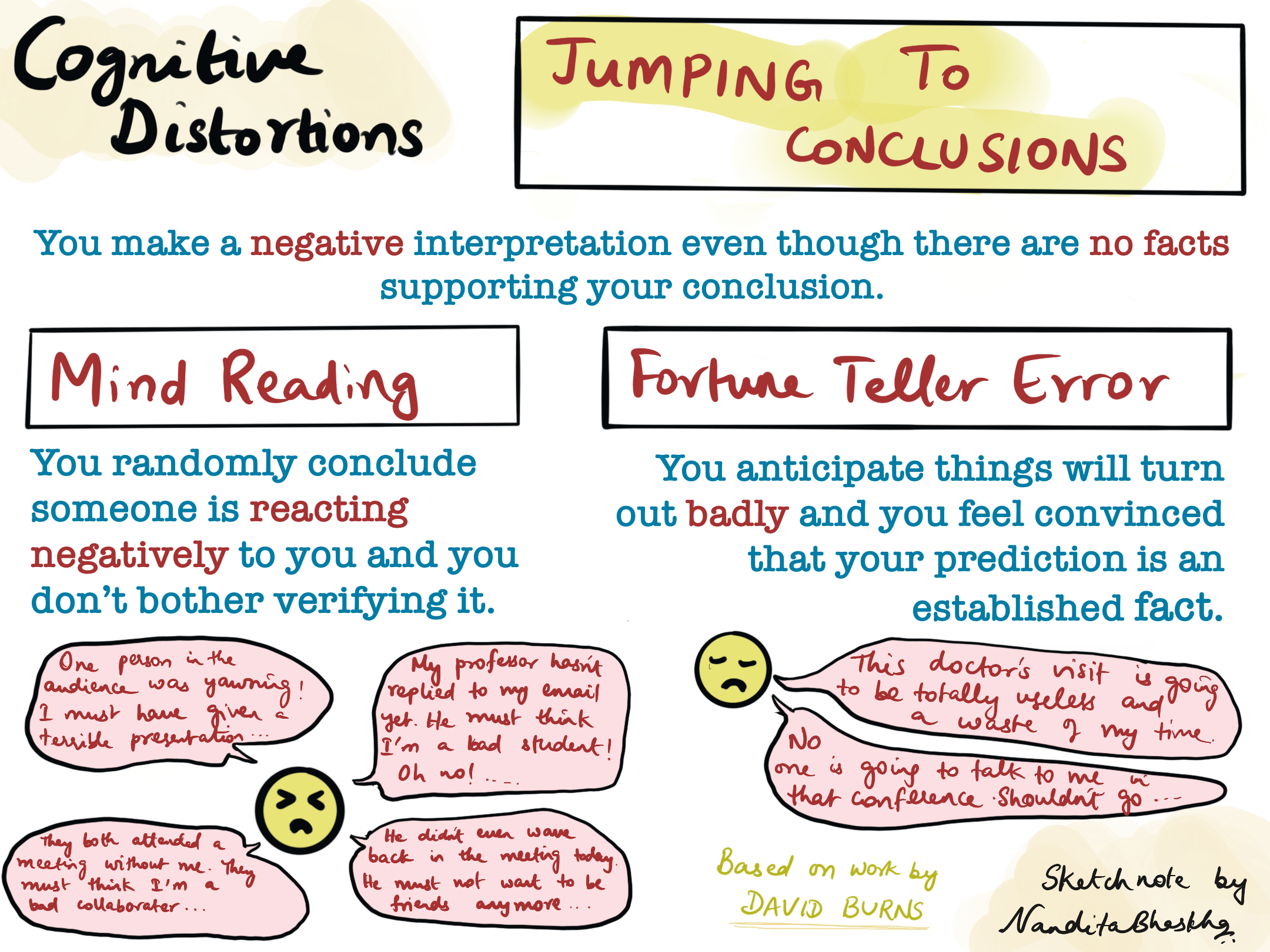 Figure 9: Jumping to conclusions
Figure 9: Jumping to conclusions
References
- [1] David Burns. Feeling Good: The new mood therapy
- [2] Calhoon GG, Tye KM. Resolving the neural circuits of anxiety. Nature Neuroscience (2015) 18(10): 1394-404. DOI: 10.1038/nn.4101
- [3] Ahrens S, Wu MV, Furlan A, Hwang GR, Paik R, Li H, Penzo MA, Tollkuhn J and Li B. A central extended amygdala circuit that modulates anxiety. Journal of Neuroscience (2018) 38(24): 5567-5583. DOI: 10.1523/JNEUROSCI.0705-18.2018
- [4] Pomrenze MB, Tovar-Diaz J, Blasio A, Maiya R, Giovanetti SM, Lei K, Morikawa H, Hopf FW and Messing RO. A corticotropin releasing factor network in the extended amygdala for anxiety. Journal of Neuroscience (2019) 39(6): 1030-1043. DOI: 10.1523/JNEUROSCI.2143-18.2018
- [5] Hofmann SG, Asnaani A, Vonk IJJ, Sawyer AT, and Fang A. The Efficacy of Cognitive Behavioral Therapy: A Review of Meta-analyses. Cognitive Therapy and Research (2012) 36(5): 427-440. DOI: 10.1007/s10608-012-9476-1
- [6] Kaczkurkin AN, Foa EB. Cognitive-behavioral therapy for anxiety disorders: an update on the empirical evidence. Dialogues in Cinical Neuroscience (2015) 17(3):337-46.
- [7] D. Chloe Chung. Understanding the anxious brain
- [8] Vipassana Meditation
 Figure 1: The truth of it all
Figure 1: The truth of it all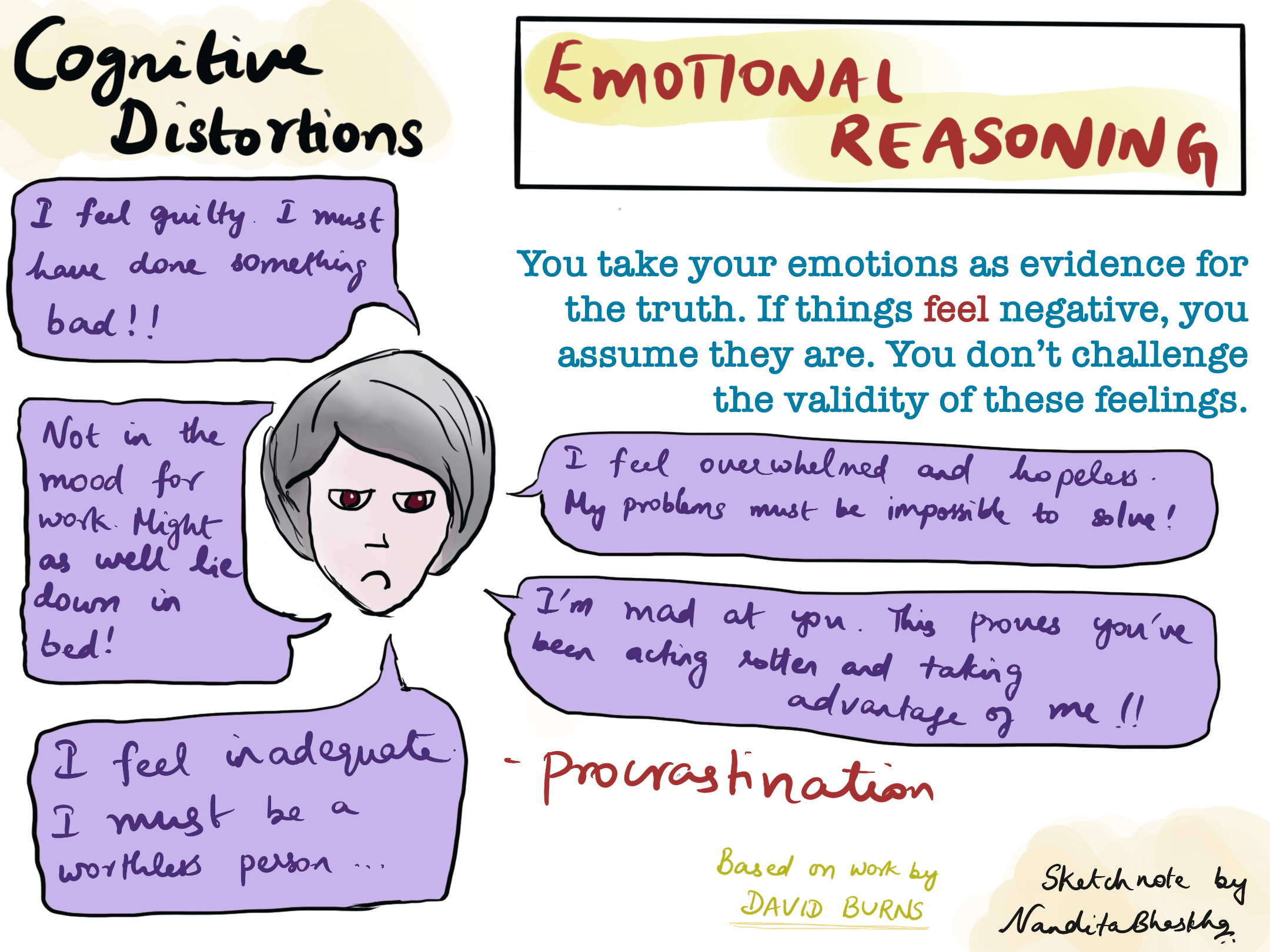 Figure 2: Emotional Reasoning
Figure 2: Emotional Reasoning Figure 3: Should Statements
Figure 3: Should Statements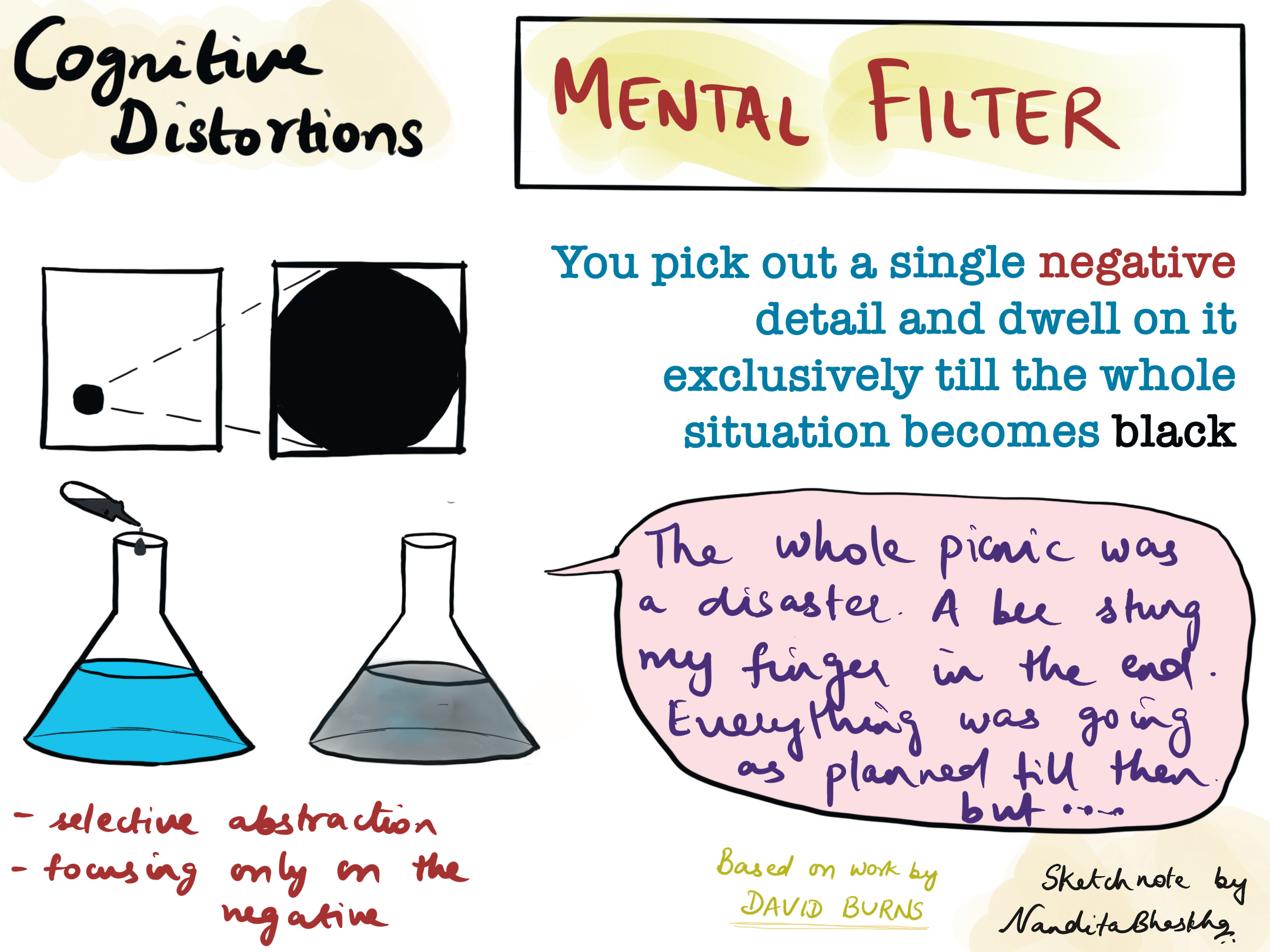 Figure 4: Mental Filters
Figure 4: Mental Filters Figure 7: All or Nothing
Figure 7: All or Nothing Figure 8: Overgeneralization
Figure 8: Overgeneralization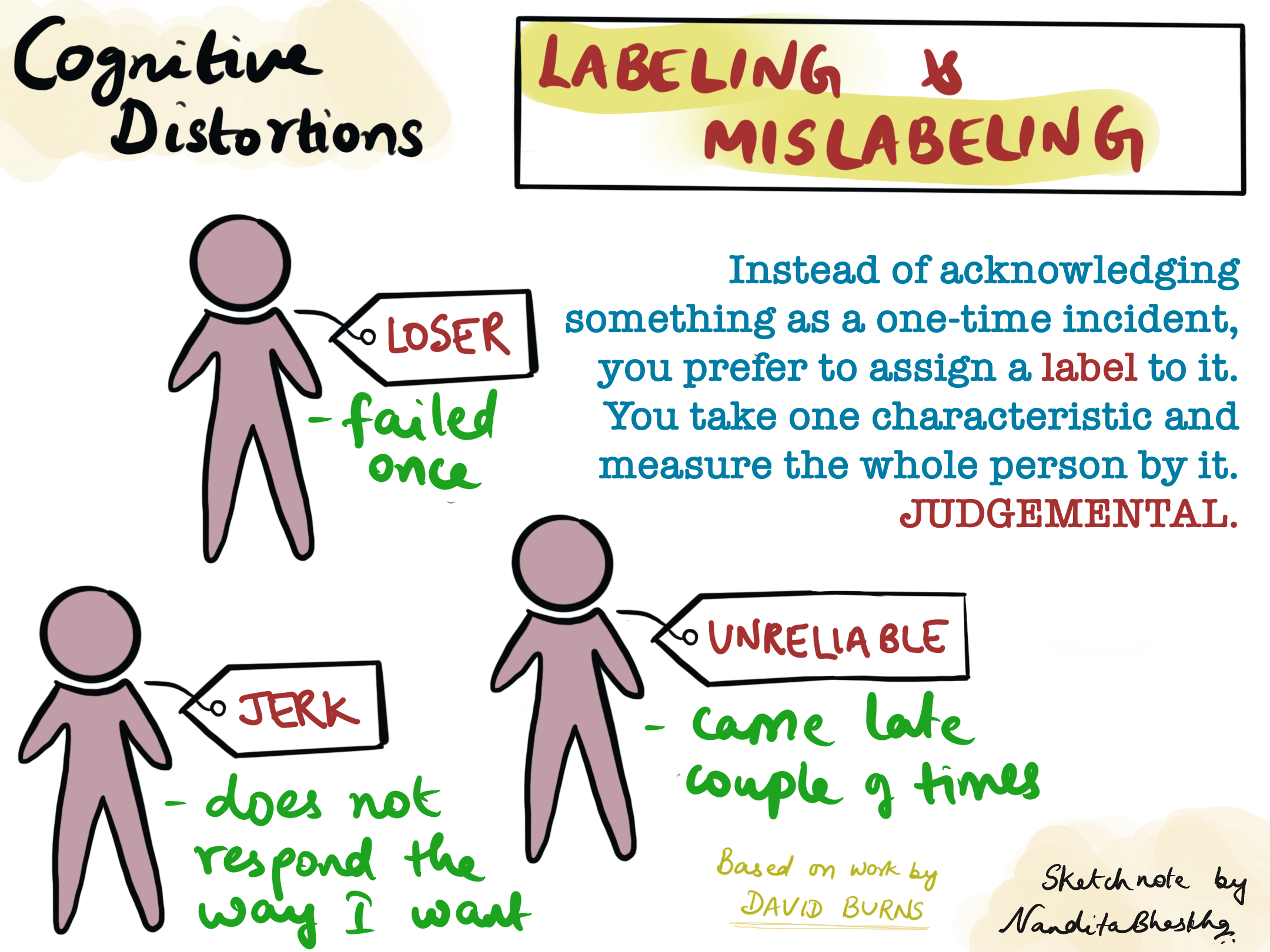 Figure 10: Labelling & Mislabelling
Figure 10: Labelling & Mislabelling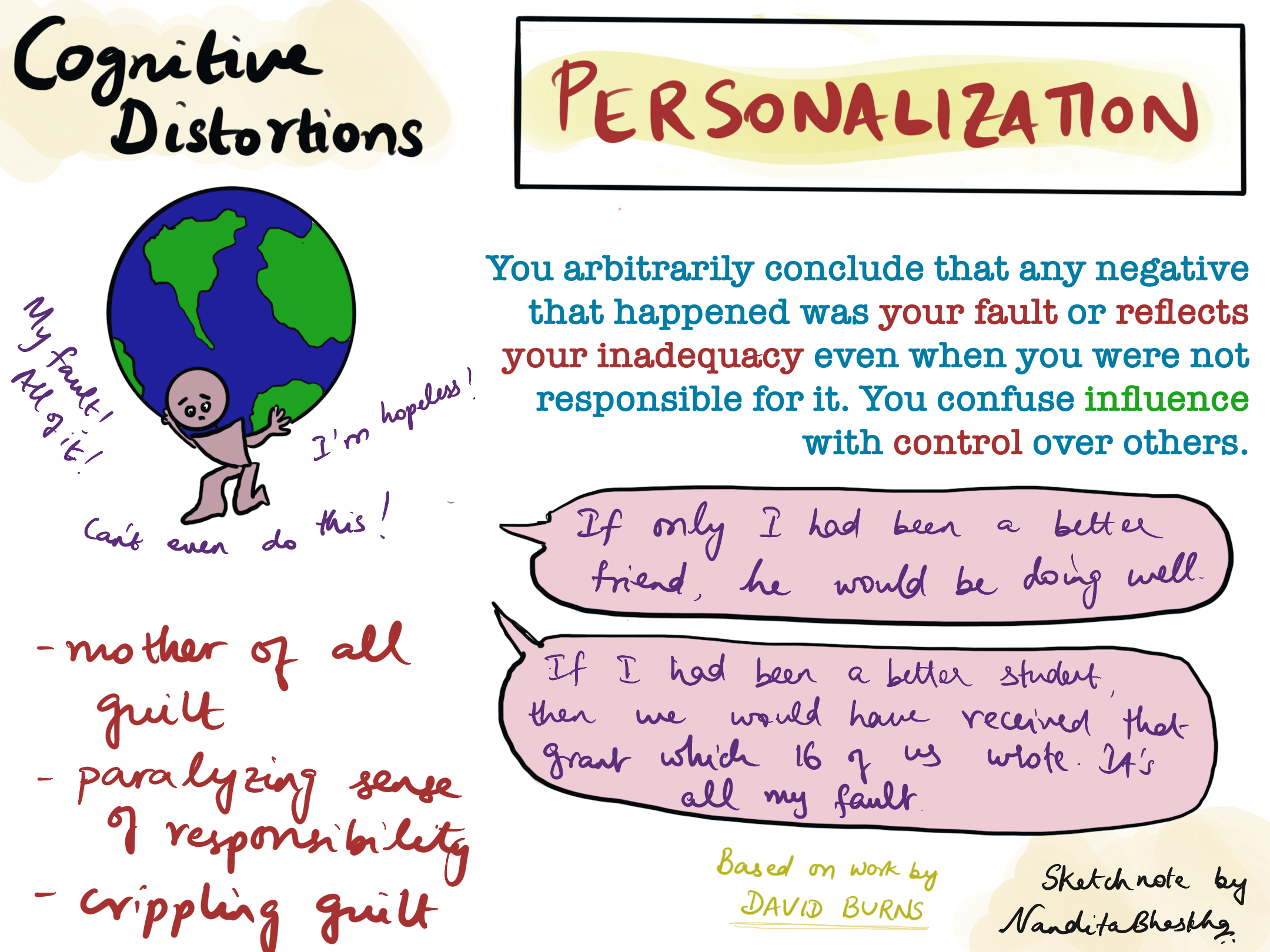 Figure 11: Personalization
Figure 11: Personalization